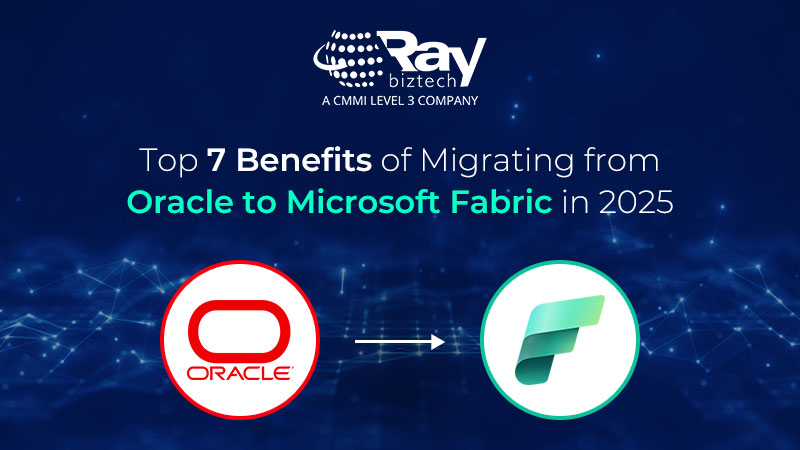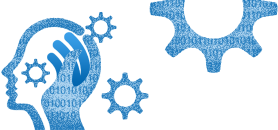Apr 17
2025
Top 7 Benefits of Migrating from Oracle to Microsoft Fabric in 2025
 As the digital landscape evolves, organizations are rethinking their data strategies to stay competitive and agile. In 2025, a significant trend is the migration from legacy systems like Oracle to modern, cloud-native platforms such as Microsoft Fabric. This shift is not just about adopting new technology—it's about unlocking new levels of efficiency, intelligence, and innovation. Here are the top seven benefits of migrating from Oracle to Microsoft Fabric in 2025.
As the digital landscape evolves, organizations are rethinking their data strategies to stay competitive and agile. In 2025, a significant trend is the migration from legacy systems like Oracle to modern, cloud-native platforms such as Microsoft Fabric. This shift is not just about adopting new technology—it's about unlocking new levels of efficiency, intelligence, and innovation. Here are the top seven benefits of migrating from Oracle to Microsoft Fabric in 2025.This migration isn't just a tech upgrade—it's a strategic move to boost agility, reduce costs, and harness the full power of AI-driven analytics and cloud-native capabilities.
1. Significant Cost Savings and Improved ROI
Oracle databases are known for their high licensing fees, complex infrastructure requirements, and ongoing maintenance costs. Microsoft Fabric, on the other hand, offers a unified, cloud-based platform with a transparent, pay-as-you-go pricing model. Features like autoscale billing for Spark workloads and included storage for Mirroring allow organizations to pay only for what they use, eliminating the need for costly overprovisioning. With built-in monitoring and usage controls, businesses can optimize their spending and achieve a faster return on investment.
2. Enhanced Performance and Effortless Scalability
Traditional Oracle environments often struggle to keep up with the demands of modern, data-intensive applications. Microsoft Fabric is designed for high performance and seamless scalability. Its cloud-native architecture allows resources to scale automatically based on workload, ensuring consistent performance even as data volumes and user demands grow. Predefined resource profiles and intelligent workload management mean organizations can achieve optimal performance without the need for deep technical tuning.
3. Unified and Modern Data Architecture
One of the biggest challenges with legacy Oracle systems is data fragmentation, which leads to silos and integration headaches. Microsoft Fabric addresses this with a unified architecture centered around OneLake—a single, integrated data lake that eliminates duplication and accelerates data access. By bringing together the best of Azure Data Factory, Synapse Analytics, and Azure ML, Fabric creates a seamless ecosystem where data flows freely and securely between services, simplifying data management and integration.
4. Advanced Analytics and AI Capabilities
Modern businesses need more than just data storage—they need actionable insights and predictive analytics. Microsoft Fabric excels in this area, offering advanced analytics and AI integration that goes far beyond what traditional Oracle systems provide. With built-in support for custom AI agents, natural language queries, and unified access to structured and unstructured data, organizations can unlock powerful new insights. Fabric’s data agents can pull information from multiple sources, enabling real-time analytics and intelligent automation across the enterprise.
5. Simplified Data Management and Robust Security
Managing and securing data in Oracle environments can be complex and time-consuming. Microsoft Fabric streamlines these processes with centralized management tools and industry-leading security features. The introduction of OneLake Security allows organizations to define access permissions once and enforce them consistently across all applications and data engines. With granular controls for roles, row- and column-level security, and an intuitive interface, businesses can protect sensitive data while reducing administrative overhead.
6. Real-Time Data Processing and Insights
In today’s fast-paced world, real-time data processing is essential for making timely decisions. Microsoft Fabric offers robust real-time capabilities, including expanded connector support for various data sources and event-driven workflows. Features like Mirroring enable secure, real-time replication from operational databases into OneLake, allowing organizations to analyze up-to-date information without disrupting core business systems. Automated event handling and streaming analytics empower businesses to respond instantly to changing conditions.
7. Future-Proofing Your Data Strategy
Perhaps the most compelling reason to migrate to Microsoft Fabric is its future-ready design. While Oracle was built for a different era, Fabric is engineered for the evolving needs of modern enterprises. With continuous innovation, regular feature updates, and a developer-friendly ecosystem—including a new command-line interface and robust APIs—Fabric ensures your data platform can adapt to new technologies and business requirements. This future-proof approach positions organizations to leverage emerging trends in AI, analytics, and cloud computing.
Conclusion
Migrating from Oracle to Microsoft Fabric is more than a technical upgrade—it’s a strategic move that empowers organizations to reduce costs, boost performance, and unlock the full potential of their data. With its unified architecture, advanced analytics, simplified management, and future-ready capabilities, Microsoft Fabric is setting the standard for enterprise data platforms in 2025 and beyond. For organizations looking to drive innovation and stay ahead in a data-driven world, the time to make the switch is now.

